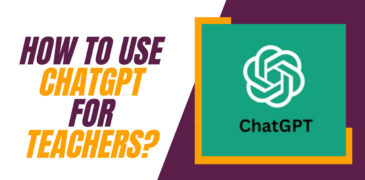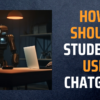Hello to all the fantastic teachers and professors out there! I can barely contain my enthusiasm as I’m about to introduce you to a game-changer in the realm of education — a revolutionary tool that has been pivotal in my journey to reshape the conventional educational environment into a vibrant, personalized digital experience. You’ve guessed it right, we’re talking technology! Today, we’ll be exploring the captivating universe of ChatGPT, a formidable AI-driven model birthed by OpenAI. If this is your first encounter with it, fasten your seatbelts, because we’re in for an intriguing ride!
Let’s Get Started: What is ChatGPT?
In case you’re wondering, “GPT” stands for Generative Pretrained Transformer, a fancy name that means it’s an AI model trained to understand and generate human-like text based on the prompts given to it. Imagine having a conversation with someone who has been exposed to an encyclopedia’s worth of information, but without the overbearing weight of ego, fatigue, or need for a coffee break. That’s ChatGPT for you!
Why Should I, as an Educator, Be Interested?
“Well, it sounds pretty neat,” you might say, “but I’m a teacher, not a data scientist. Why should I care about this digital juggernaut?” The reason is simple — ChatGPT is much more than a complex algorithm. It’s a dynamic educational companion that offers:
- Customized learning experiences: Every student is unique. ChatGPT can cater to individual learning styles and paces, making learning truly personalized.
- Round-the-clock availability: No need for setting office hours. Students can interact with ChatGPT whenever they need academic support.
- Broad knowledge base: From history and science to literature and math, ChatGPT is well-versed in numerous subjects.
Making the Most of ChatGPT: A Practical Guide for Teachers
So, how can you integrate this futuristic tool into your classroom? Let’s delve into some potential applications.
Paving Individual Learning Paths
The ability of ChatGPT to customize responses can be a game-changer for individual learning. Here are some ways to use it:
- Reiterate and reinforce concepts: Ask students to interact with ChatGPT for reviewing lessons. By providing different perspectives and explanations, it may help the knowledge to stick more effectively.
- Unlimited practice: Forget about running out of exercises for practice. ChatGPT can generate new ones, providing endless opportunities for learning.
Enriching Classroom Activities
Who said ChatGPT is only good for self-study? Here’s how you can make it a part of your classroom activities:
- Kickstarting group projects: For brainstorming sessions or research, ChatGPT can provide a plethora of information, sparking creative discussions.
- Fueling debates: Use ChatGPT to generate arguments on both sides of a controversial issue. It’s a fantastic way to promote critical thinking.
Simplifying Homework
Ah, homework — loved by few, feared by many. But ChatGPT can turn it into a more approachable task:
- Guided problem-solving: Instead of handing over ready-made solutions, ChatGPT can lead students through the process of finding the answers themselves.
- Homework helper: Stuck on a tricky problem? ChatGPT can provide hints and check the work done, ensuring students stay on the right track.
Also read:
How to Draw Graphs, Charts and Diagrams in ChatGPT
How to Save and Share ChatGPT Conversations
How to Set Custom Instructions in ChatGPT
How to Turn off Chat History in ChatGPT
FAQs
How do I introduce ChatGPT to my students?
Start by explaining what ChatGPT is, how it works, and why you’re introducing it in the classroom. Then, demonstrate how to use it through a live session. Make sure students understand it’s a tool to help their learning, not to replace their own efforts or the teacher’s role.
What subjects can ChatGPT cover?
ChatGPT has a broad knowledge base, which means it can provide information and assist with a range of subjects, including but not limited to math, science, history, and literature. However, keep in mind it isn’t perfect and may not be up-to-date with the very latest developments or niche topics.
Can ChatGPT grade students work?
ChatGPT doesn’t have a built-in grading feature, and it can’t fully understand and evaluate the nuanced thinking that goes into a student’s work. However, it can provide some feedback on factual questions and offer explanations to guide students’ understanding.
Is ChatGPT safe for students to use?
OpenAI has made efforts to ensure ChatGPT refuses inappropriate requests and maintains a respectful interaction. However, as with any AI, it’s not perfect, so it’s recommended to monitor younger students’ use and set clear expectations about appropriate use of the tool.
Can I use ChatGPT to create lesson plans?
Yes, you can. ChatGPT can help generate ideas, topics, and potential activities for a lesson plan. But remember, these are only suggestions. You need to review and adapt them to fit your specific teaching style and students’ needs.
What if ChatGPT gives incorrect information?
It’s possible, as ChatGPT isn’t perfect. It’s trained on a large amount of data, and it may occasionally provide information that’s incorrect or out of date. Encourage students to cross-verify any crucial information and to discuss any confusion with you.
Is ChatGPT a substitute for in-person teaching?
No, ChatGPT is not a replacement for teachers. It’s a tool that can complement your teaching. It can offer students extra help and allow them to explore topics at their own pace, but the human connection and guidance that a teacher provides are irreplaceable.
Can I use ChatGPT to provide real-time feedback in the classroom?
While ChatGPT can provide instant responses, it’s not designed to evaluate and provide feedback on complex student inputs like essays or oral presentations. It’s best used for clarifying concepts, providing alternate explanations, and guiding through problem-solving.
Can ChatGPT assist with distance learning?
Absolutely! ChatGPT can be an excellent tool for distance learning. It can provide support outside of the scheduled online classes, assist with homework, and offer personalized study sessions.
How can I use ChatGPT to foster critical thinking in students?
You can use ChatGPT to generate discussion prompts or debate topics. Since it can provide perspectives on different sides of an issue, it can be a good tool to kickstart analytical discussions and foster critical thinking.
How can ChatGPT assist in teaching English as a second language?
ChatGPT can be a great tool for practicing English. Students can converse with the model to improve their vocabulary, grammar, and comprehension. However, it should be complemented with human interaction and traditional language learning resources for a well-rounded learning experience.
Conclusion
As we navigate through the fast-paced, ever-evolving world of education, it’s crucial to leverage the tools at our disposal. ChatGPT is one such tool — not a replacement for us teachers, but a powerful aide, a sidekick if you may, to help us take our teaching to the next level.
But, as with any tool, remember to use it wisely. ChatGPT is an extraordinary piece of technology, but it doesn’t come without its limitations. It doesn’t always get everything right, and it certainly can’t replace the human touch that we, as educators, bring into our classrooms.
So, why not give ChatGPT a shot? See how you can use it to enrich your classroom experiences, aid your students in their individual learning journeys, and make education a little more interactive, personalized, and engaging. We’re in this beautiful profession to shape the minds of the future — let’s embrace AI to keep pushing the boundaries of what’s possible!
Thank you for taking the time to embark on this journey with me. As we continue to learn and grow together, I wish you all the best in your educational endeavors. Keep teaching, keep inspiring, and keep making a difference in the lives of your students. Remember, the future of education is in our hands, and with tools like ChatGPT, the sky’s the limit!
Until next time, happy teaching!







